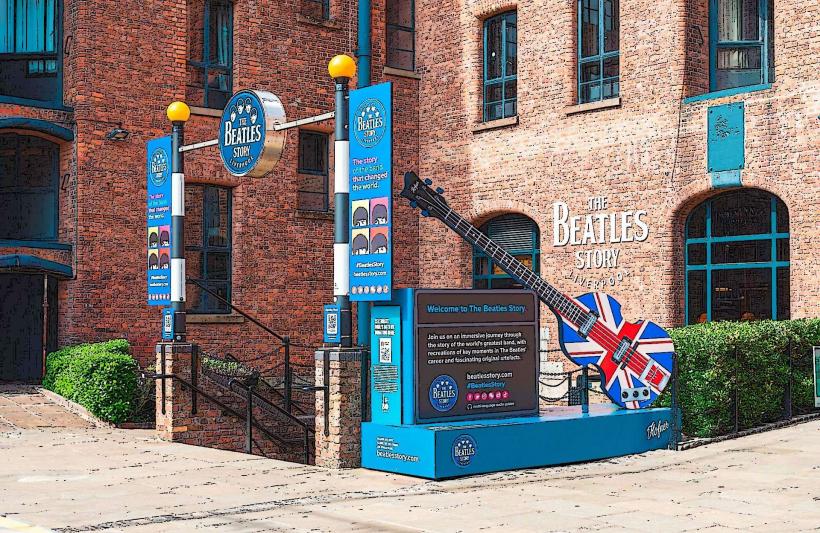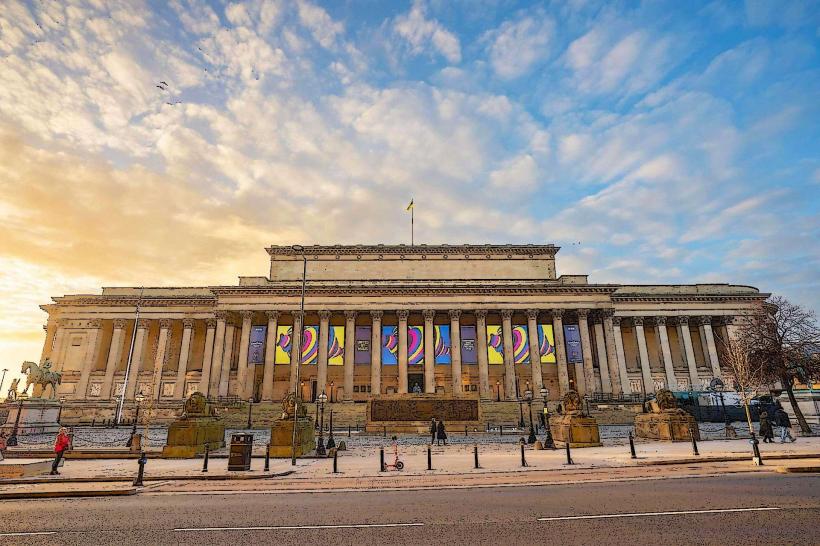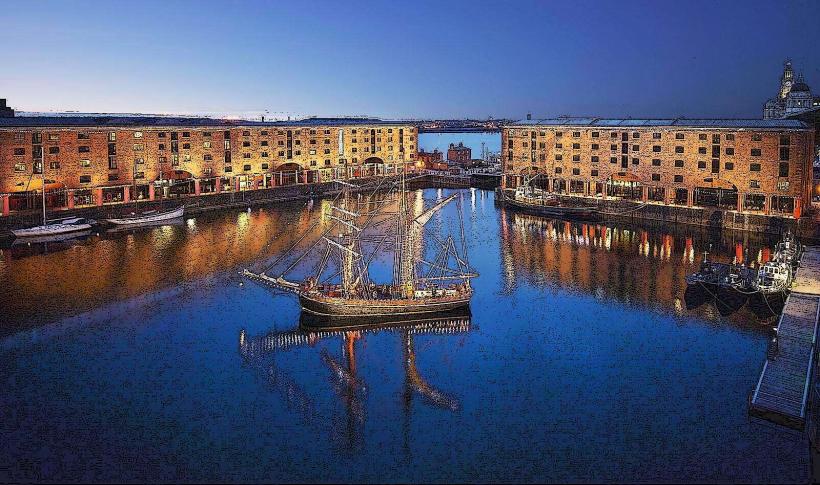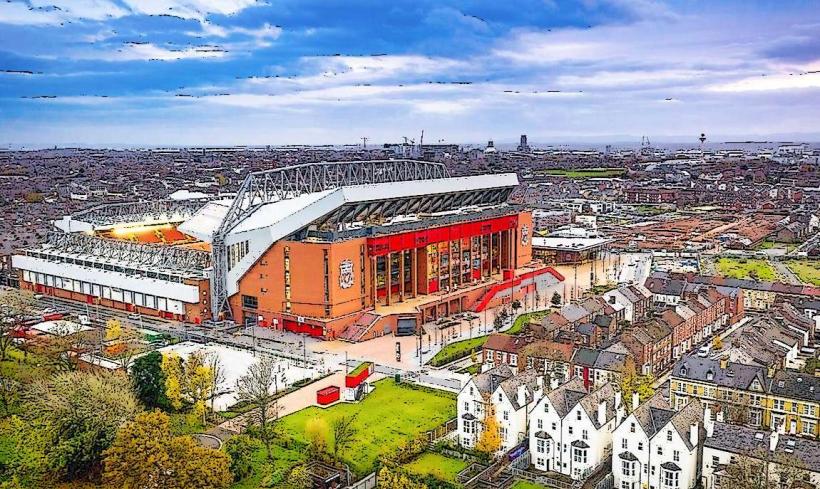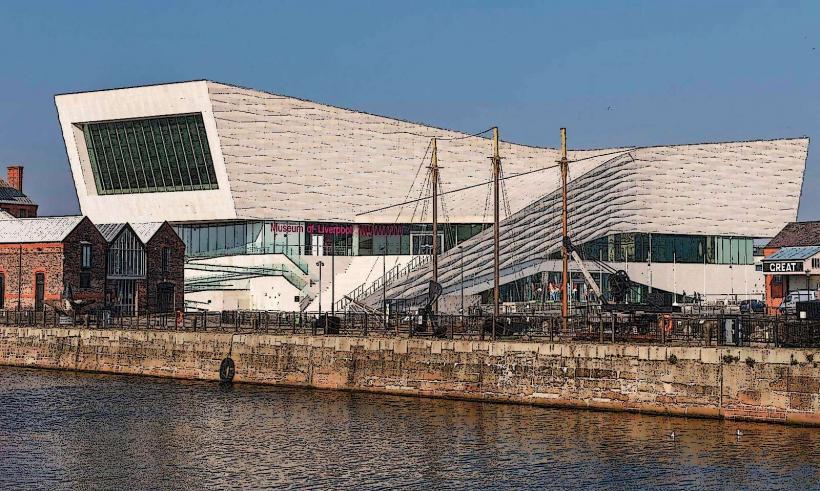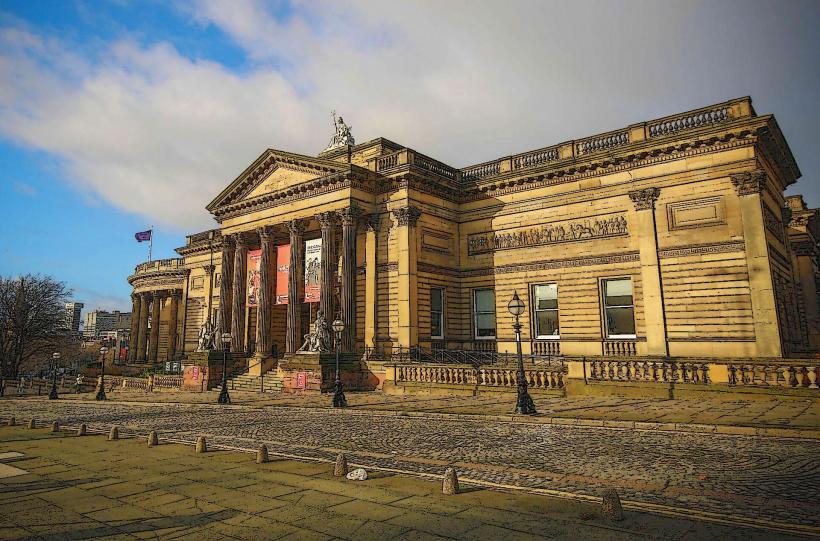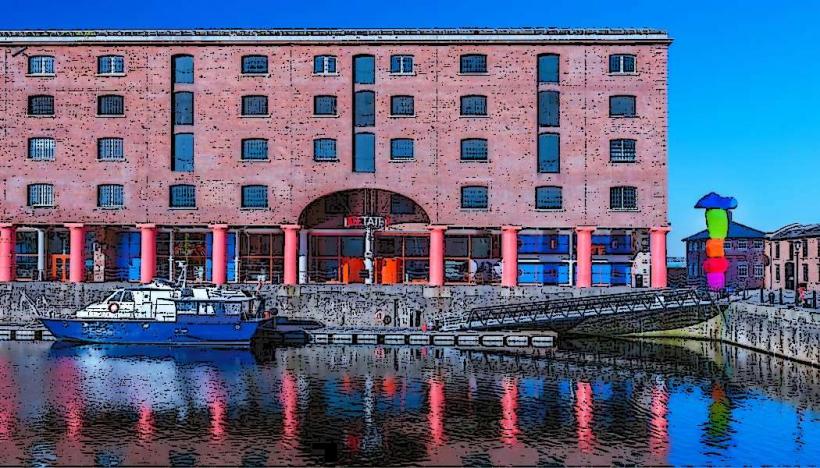Information
Landmark: Royal Liver BuildingCity: Liverpool
Country: United Kingdom
Continent: Europe
The Royal Liver Building is one of Liverpool's most iconic landmarks, known for its striking architecture and historical significance. Located on the Liverpool waterfront, this building is an essential part of the city’s maritime heritage and a symbol of its prosperity during the early 20th century. Standing at the pier head, alongside the Cunard Building and Port of Liverpool Building, the Royal Liver Building is part of the Three Graces, a group of grand, historic buildings that define the city’s skyline.
History and Origins
The Royal Liver Building was built between 1908 and 1911 and was designed by the architects Walter Aubrey Thomas and Arthur M. Ferguson in a style that blends Edwardian Baroque with influences from Art Nouveau. The building was constructed to house the Royal Liver Assurance Group, a prominent insurance company based in Liverpool. The design and construction were driven by the need for a prestigious headquarters that would reflect the growing wealth and importance of the city.
At the time, Liverpool was one of the world’s busiest ports, and the city was enjoying a period of significant economic growth. The Royal Liver Building, at the time of its completion, was the tallest building in Liverpool and one of the first buildings in the world to be built using reinforced concrete. This technological advancement made the Royal Liver Building an engineering marvel for its time.
Architecture and Features
The Royal Liver Building is a magnificent example of Edwardian Baroque architecture, characterized by ornate detailing, grand proportions, and an imposing structure. Its design incorporates several striking features that make it one of the most recognizable buildings in the United Kingdom.
Height and Structure:
Standing at 98 meters (320 feet) tall, the Royal Liver Building was the tallest building in Liverpool when it was completed and remained so until the 1960s. It has 13 floors, and its monumental size is accentuated by the domed towers at the corners of the building.
Two Clock Towers:
The building is perhaps most famous for its two clock towers, which are a defining feature of its skyline. Each tower features a large clock face, with a diameter of 7.6 meters (25 feet), making them some of the largest clock faces in the country. The clocks were designed to be visible from afar, symbolizing the building's role as a beacon for both the maritime industry and the city itself.
Liver Birds:
Another iconic feature of the Royal Liver Building is the pair of liver birds that sit atop the towers. These birds, which are mythical creatures resembling cormorants, are an emblem of the city of Liverpool. According to legend, the liver birds were once thought to be the protectors of the city, keeping watch over the people and the port. One bird faces out to sea, while the other faces inland, symbolizing the city's dual focus on maritime trade and local commerce. The liver birds are not only an integral part of the building's design but have also become a symbol of Liverpool’s identity and pride.
Exterior Detailing:
The exterior of the Royal Liver Building is elaborately decorated with sculptures, reliefs, and ornamental motifs that reflect the building’s opulence and the grandeur of the Edwardian era. The use of red sandstone in the facade adds to its richness, contrasting with the building’s white Portland stone details. The central section of the building is slightly recessed, creating a dramatic effect as it rises above the lower wings.
Interior Design:
Inside, the Royal Liver Building is equally impressive, though much of the interior has been modernized or repurposed over the years. The building originally housed the offices of the Royal Liver Assurance company, but in recent years, it has been transformed into a mixed-use space. The original lobby still features marble flooring and elaborate plasterwork, showcasing the building’s early 20th-century splendor.
Historical Significance
The Royal Liver Building holds significant historical importance in both the context of Liverpool and the wider British Empire. At the time of its completion, it symbolized Liverpool’s dominance as a major port city and the thriving economy of the early 20th century.
Symbol of Liverpool’s Prosperity:
Built during a time of great wealth in the city, the Royal Liver Building represents the peak of Liverpool’s industrial and maritime success. The wealth generated by the city’s shipping trade, including the expansion of the Liverpool Docks and the rise of the merchants, is reflected in the scale and grandeur of the building.
Technological Innovation:
As one of the first buildings to use reinforced concrete, the Royal Liver Building was an early example of modern construction techniques. The use of this new material helped shape the future of skyscraper design and was a significant innovation in architectural engineering at the time.
Cultural Icon:
Over time, the Royal Liver Building has become more than just a commercial property; it has become a cultural icon of Liverpool. The liver birds perched atop the towers have become synonymous with the city and represent Liverpool's unique heritage and identity. The building itself is now considered one of the Seven Wonders of the British Railway and is a key feature of Liverpool’s UNESCO World Heritage Site.
The Royal Liver Building Today
Today, the Royal Liver Building remains one of the most recognizable landmarks in Liverpool. The building continues to serve as an office space but has also been transformed into a major tourist attraction. Visitors can explore the building’s history and learn more about its significance to the city and its people.
Tours and Visitor Experience:
In recent years, the Royal Liver Building has opened its doors to the public, offering guided tours that provide insights into its rich history, architecture, and cultural significance. The tours highlight the building’s engineering marvels, its iconic clocks, and the legend of the liver birds, and offer visitors a chance to explore areas of the building that were previously closed to the public.
The Royal Liver Building 360 Experience:
One of the main attractions in the building is the Royal Liver Building 360 Experience, a multi-sensory exhibition that takes visitors on a journey through the building's history. The experience includes interactive displays, historical artifacts, and the opportunity to visit the roof and get a panoramic view of Liverpool and its waterfront. Visitors can also learn about the restoration of the building and its role in shaping the city’s skyline.
Cultural and Commercial Hub:
Today, the Royal Liver Building is home to a variety of businesses, including offices, restaurants, and commercial spaces. It continues to be a vital part of Liverpool’s economy and a focal point of the city’s identity. It also hosts a variety of events and exhibitions, contributing to the city’s cultural life.
Conclusion
The Royal Liver Building is a striking and historically significant landmark in Liverpool, embodying the city’s rich maritime heritage, architectural innovation, and cultural pride. Its iconic clock towers and liver birds make it one of the most recognizable buildings in the UK. As a symbol of the city’s prosperity during the early 20th century and a showcase of Edwardian Baroque design, the Royal Liver Building remains a vital part of Liverpool’s identity and continues to attract visitors from around the world. Whether you are drawn by its architectural beauty, its historical significance, or its cultural role, the Royal Liver Building offers a fascinating glimpse into the story of Liverpool and its rise as a global port city.

